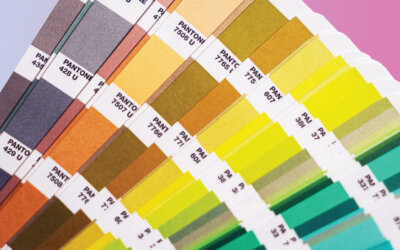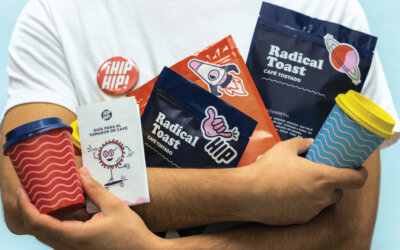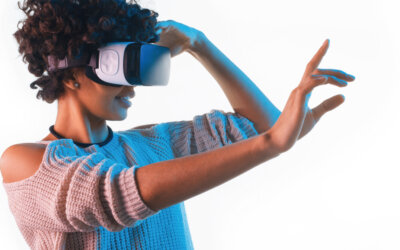The CPG
Packaging Lifecycle
What is Our Role… and Responsibility?
How would packaging design change if we considered its afterlife just as much as its shelf impact? How can we apply creativity, insight, and practicality to every stage of a package’s lifecycle? And what might we discover when we follow our designs beyond the shelf and into the systems that give them a second life? We took a trip to Lakeshore Recycling Systems and came back with a whole new perspective.
OUR THINKING
The World Through Our Lens
It’s all about perspective. Our team has thoughts on CPG branding, strategy, design, packaging, prototyping, sustainability, design trends, and just about everything else impacting our industry. Want a fresh POV in your inbox? Subscribe for updates (and follow us on social!).
How To Make Better Strategic Decisions For Your Brand
Whenever we tell the story of our partnership with Fairlife—back when it was an emerging startup and before it was acquired by Coca-Cola—there is one anecdote that never fails to shock a roomful of people. It’s the part when our client stakeholder, a former CPG beverage executive, decides to chuck the consumer validation research and go with his gut.
Pioneering Sustainable Solutions in CPG Packaging
As packaging experts, we’re deeply invested in what’s happening in and around our industry, from emerging brands to disruptive design trends to innovative materials. From time to time, we’ll highlight a new company, product, or innovation that’s changing everything—and on our radar this month is Danimer Scientific and its suite of sustainable packaging solutions.
Pushing Brand Boundaries: Unconventional Substrates in Design
When it comes to packaging, is anything more boring than a plastic tube? Plastic is a ubiquitous petroleum product (one consumers definitely have feelings about); a tube is a simple shape. As brand designers, what can we do differently?
Turns out, everything. Design involves trying out all the options. Look at the marketplace…if you want to stand out, you have to be different. Being different is scary. What if consumers don’t like it? How much will it cost? The risks are real.
The Environmentally Friendly Packaging Strategies Brands Can’t Ignore
In an era of heightened environmental consciousness, brands grapple with the challenge of wasteful packaging. Explore strategies to align with consumer expectations, from plastic-free materials to transparent storytelling, as brands navigate the complex landscape of sustainability and aim for a better, eco-friendly future.
Health-Conscious Revolution: 5 Emerging Better-for-You Packaging Design Trends
Unveiling the packaging design trends dominating the better-for-you (BFY) market. Dive into the world of white aesthetics, vibrant minimalism, benefit-driven claims, plant-based branding, and consumer-friendly presentations. Explore how these trends shape the packaging landscape for health-conscious consumers.
Standing Out on Shelf
Even those of us who work in CPG every day walk our store aisles mindlessly much of the time, our thoughts on a million other things. When you’re hitting Kroger, Target, Whole Foods, Costco or Sam’s Club every single week (or more if you, ahem, forget something), it takes a lot to notice the items you buy over and over, and you may not be in the mindset to check out something new very often.So what does it take to capture the attention of even the most jaded shopper? It may seem obvious, but the thing that really gets us to stop, consider, and purchase is…color.
Sustainable, Premium, and Tech-Driven
We’re naturally biased, but it’s no secret that packaging design is an essential aspect of modern branding and marketing. Innovative packaging designs are often the key factor that sets a product apart from its competitors: 72% of American consumers say their purchasing decisions are heavily influenced by the packaging design of the products they buy (or don’t buy). As packaging experts and enthusiasts, we always have an eye out for exciting material and design trends to help our clients’ brands stay relevant. Here are a five to watch right now.
Buckle Up!
As consumers continue to adopt this new wave of technology and, in some instances, have been forced to do so with remote schooling and virtual graduation ceremonies, brands (and the designers who support them) will also need to consider these new platforms to connect with their audiences and create brand experiences.
Adapting To What’s Next
The world of design and branding is one of never-ending changes, but that’s what keeps it so exciting and challenging…in a good way! Over my tenure, I have worked for a range of agencies and clients, and all of them have pushed me to address and adapt to their various business needs. What I’ve observed over the past years is how the design industry has collectively shifted towards lower budgets, faster timing, and agency downsizing. Due to the confluence of these changes, here are the three most significant trends I’ve observed.
From The Cave To The Cloud
Design is an ever-evolving discipline with many facets. They are informed and feed off the technology, trends and culture of their times but are all united by the need to tell a story about an object, whether physical or metaphorical. In terms of graphic design, this discipline is rooted in visual storytelling and communication with a history stretching back to hieroglyphics and the first cave paintings like those in Lascaux, France. Primitive, yes, but through and through the start of iconography.
Quiet! Leading For Introverts
Staying inside and working remotely has pushed all of us introverts further into our introversion, and those who were extroverted or straddling the line between the two have waded deeper into their own internal thoughts and feelings. Meanwhile, professional communication and conversations have become constant albeit distant as we incorporate technology such as Slack or Teams into our day-to-day. So, how do we as introverts live in a world of endless communication but still have the energy to devote to those we are leading?
How Long Can You Scream?
Once upon a time all a brand needed to do was attract attention to itself by pointing out the frailties of any given category, scream it from the rooftops and, hey-presto, you were a provocative upstart brand.












